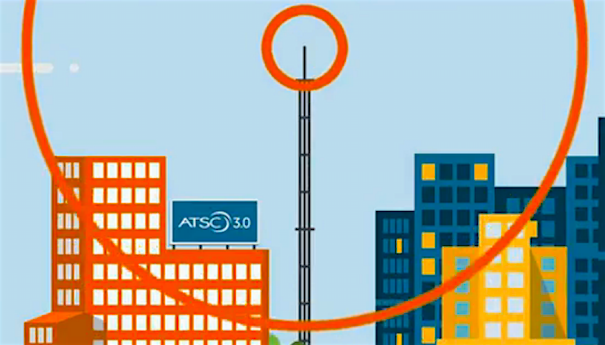NAB Asks FCC to Take Steps to Hasten Sunset of 3.0 Simulcasting Rule
NAB wants commission to avoid 'heavy-handed' and 'overly prescriptive' approach

WASHINGTON—The NAB told the FCC this week that while the deployment of ATSC 3.0 (aka "NextGen TV") has been a success despite the hurdles imposed by the pandemic of the past two years, the commission could take additional steps to remove barriers to help accelerate the transition from 1.0 to 3.0 by adding clarity to when broadcasters will be allowed to stop simulcasting the current ATSC 1.0 signal with ATSC 3.0.
In reply comments filed with the FCC, NAB touted the success of the ATSC 3.0 rollout, highlighting the fact that more than half of U.S. households are within the reach of a NextGen TV signal and that millions of ATSC 3.0 compatible sets have already been sold. Industry figures indicate, according to NAB, that more than 58 million compatible sets will have been sold by the end of 2025, which doesn’t take into account the number of dongles or converter boxes that could make it to the market by then.
That said, NAB told the commission that it should avoid a “heavy-handed” and “overly prescriptive” approach that could hamper industry-wide efforts to deploy ATSC 3.0. In addition to the aesthetic advantages of improved video and audio as well as additional advanced services such as enhanced and multi-language audio as well as datacasting and emergency alerting, NAB also said the standard allows broadcasters to use technology that makes more efficient use of the spectrum through advanced modulation and encoding.
It also said allowing broadcasters to use ATSC 3.0 to offer such advanced services that can compete with broadband providers is good for the public interest.
“If ATSC 3.0 allows broadcasters to offer new services that are competitive with cable or streaming services, that will likely lead to consumers having more choices and more competitive pricing options,” NAB said. “That plainly serves the public interest and the Commission should be encouraging broadcasters in this respect.”
When the FCC adopted the ATSC 3.0 standard in November 2017, it set a five-year time period requirement for broadcasters to broadcast, at the least, the same programming on its 3.0 channel as it does on its main 1.0 signal. While it was never considered realistic that that rule would expire at the end of the five years, the FCC will now be reviewing such requirements on a periodic basis and could change the rules depending on how well the transition is proceeding.
Broadcasters would like to end the simulcasting rule sooner rather than later and suggested several steps the commission could take to move the transition along. Among the suggestions is a revision of the rule requiring broadcasters transitioning to ATSC 3.0 provide 90 days’ notice to MVPDs.
Get the TV Tech Newsletter
The professional video industry's #1 source for news, trends and product and tech information. Sign up below.
The rule “is often excessive in practice,” NAB said, considering that “broadcasters have every incentive to keep MVPDs informed as to their plans.”
Broadcasters would also like more flexibility in who can serve as “host stations” in markets launching NextGen TV (where one station’s transmission facilities are used to transmit multiple stations' 1.0 or 3.0 signals) and be allowed to use advanced video compression technology to reduce bandwidth in its primary programming “to help facilitate the transition and maximize broadcasters’ ability to preserve programming as capacity constraints grow more acute.”
It also asked the commission to begin taking steps to revise rules that take into account technical advances and changes in the media landscape that have occurred since the standard was adopted.
“There may be circumstances where the simulcasting requirement proves a substantial barrier to the transition,” NAB told the FCC. “NAB has previously recommended the Commission open a proceeding to begin to examine the conditions that would warrant sunsetting the simulcasting requirement as a whole, not only the substantially similar requirement. The Commission should issue a further notice to examine all of these issues with an eye towards streamlining the regulatory requirements around ATSC 3.0 deployments and densification to help accelerate the transition to the benefit of all stakeholders.”
Tom has covered the broadcast technology market for the past 25 years, including three years handling member communications for the National Association of Broadcasters followed by a year as editor of Video Technology News and DTV Business executive newsletters for Phillips Publishing. In 1999 he launched digitalbroadcasting.com for internet B2B portal Verticalnet. He is also a charter member of the CTA's Academy of Digital TV Pioneers. Since 2001, he has been editor-in-chief of TV Tech (www.tvtech.com), the leading source of news and information on broadcast and related media technology and is a frequent contributor and moderator to the brand’s Tech Leadership events.

